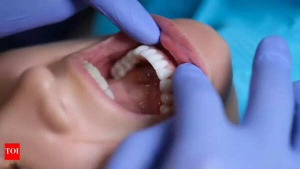The bedroom, envisioned as a sanctuary for rest and rejuvenation, often harbors unseen dangers. While obvious hazards like sharp objects or structural issues are easily identified, subtle threats emanating from everyday items can significantly impact your health. It's crucial to recognize and address these hidden dangers to ensure a truly safe and healthy sleeping environment.
While your mattress may appear comfortable, age can transform it into a breeding ground for health hazards. Mattresses exceeding 7-8 years accumulate sweat, dead skin cells, dust mites, mold, and bacteria. Regular cleaning methods often prove insufficient in eradicating these allergens, resulting in a toxic environment that you inhale nightly. This poses a significant risk, particularly for seniors with compromised immune systems. Research indicates that aging mattresses release detrimental chemicals and allergens, potentially triggering skin rashes, respiratory issues, and exacerbated allergies.
Solution: Replace your mattress every 7-10 years. Opt for mattresses crafted from non-toxic materials like organic latex or memory foam. Employ a waterproof mattress protector to ward off sweat and dust mites, and vacuum your mattress on a regular basis.

Pillows and bedding are notorious breeding grounds for dust mites, microscopic creatures that thrive on dead skin. These mites are potent triggers for allergies, asthma, and skin irritation. They can also contribute to respiratory problems, potentially leading to lung complications. Over time, pillows, in particular, amass dust mites, sweat, and allergens, transforming them into a hidden menace within your sleep space.
Solution: Launder your bedding weekly in hot water to eliminate dust mites. Replace pillows every 1-2 years and utilize hypoallergenic pillowcases to minimize allergen exposure.

While air fresheners promise a pleasant-smelling bedroom, many contain harmful chemicals known as phthalates. These substances can disrupt hormone balance and even cause reproductive harm. Regular use of synthetic air fresheners can degrade indoor air quality and silently compromise your health, frequently triggering debilitating migraines and allergies.
Solution: Refrain from using air fresheners altogether, reserving them for bathroom use only if necessary. Instead, ventilate your bedroom by opening windows to allow fresh air circulation. Consider natural alternatives such as essential oil diffusers for a healthier scent.

Proximity to artificial light sources near the bed, especially the blue light emitted from digital clocks, smartphones, and LED bulbs, can significantly disrupt your sleep cycle. This is achieved by suppressing melatonin production, the crucial hormone that regulates sleep. This disruption is particularly detrimental to older adults, who exhibit increased sensitivity to nighttime light. Consequently, poor sleep attributed to artificial light exposure elevates the risk of heart disease, diabetes, and certain cancers.
Solution: Install blackout curtains to create a dark sleep environment. Utilize dim, warm-colored lighting in the evening to minimize blue light exposure. Keep electronic devices at a distance from your bed to promote restful sleep.

Mold thrives in damp environments and can remain undetected until it triggers health problems. Mold spores present in bedroom air can induce asthma attacks, allergies, and respiratory infections. For seniors and individuals with weakened immune systems, mold exposure can be life-threatening. Furthermore, mold exacerbates skin conditions and can induce systemic inflammation, impacting joints and the heart. Mold is predominantly found in homes with limited natural light.
Solution: Routinely inspect your bedroom for signs of mold, such as water stains, peeling paint, or musty odors. If you detect mold, seek professional assistance for safe and effective removal.

Newer articles
Older articles
 Samsung Galaxy A35 5G and A55 5G: Full Pricing and Specs Revealed
Samsung Galaxy A35 5G and A55 5G: Full Pricing and Specs Revealed
 Warning Signs: 5 Clues Your Body May Be Signaling Prediabetes
Warning Signs: 5 Clues Your Body May Be Signaling Prediabetes
 Expert Tips to Help Kids Sharpen Focus and Combat Distractions
Expert Tips to Help Kids Sharpen Focus and Combat Distractions
 SA20 Teams Allowed Up to Six Player Retentions, Enhanced by New RTM Card and Increased Salary Cap for Upcoming Auction
SA20 Teams Allowed Up to Six Player Retentions, Enhanced by New RTM Card and Increased Salary Cap for Upcoming Auction
 Brain's Eye View: Study Shows We See the World 15 Seconds in the Past
OR
The 15-Second Delay: How Your Brain Creates a Seamless, But Delayed, Reality
Brain's Eye View: Study Shows We See the World 15 Seconds in the Past
OR
The 15-Second Delay: How Your Brain Creates a Seamless, But Delayed, Reality
 Cervical Cancer: Don't Ignore These 5 Subtle Warning Signs
Cervical Cancer: Don't Ignore These 5 Subtle Warning Signs
 Science-Backed: 5 Simple Daily Habits for a Healthier Heart
Science-Backed: 5 Simple Daily Habits for a Healthier Heart
 Shimron Hetmyer's Last-Gasp Six Stuns MI New York, Orcas Complete Record MLC Chase
Shimron Hetmyer's Last-Gasp Six Stuns MI New York, Orcas Complete Record MLC Chase
 Oral Cancer: Spotting the Signs, Understanding the Risks, and Why Early Detection is Critical
Oral Cancer: Spotting the Signs, Understanding the Risks, and Why Early Detection is Critical
 Infrequent Bowel Movements: When Is It Time to Worry? A Guide to Healthy Digestion
Infrequent Bowel Movements: When Is It Time to Worry? A Guide to Healthy Digestion